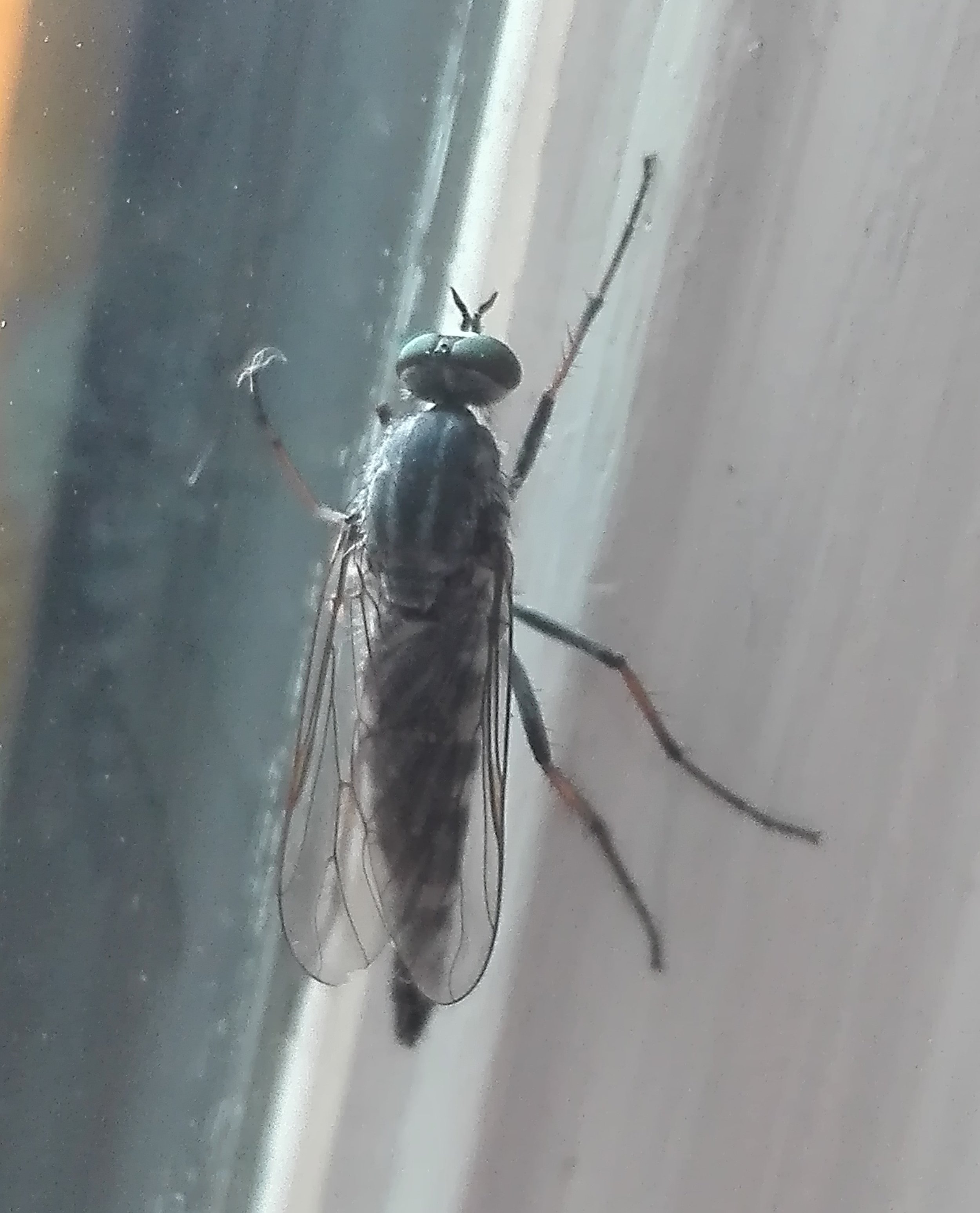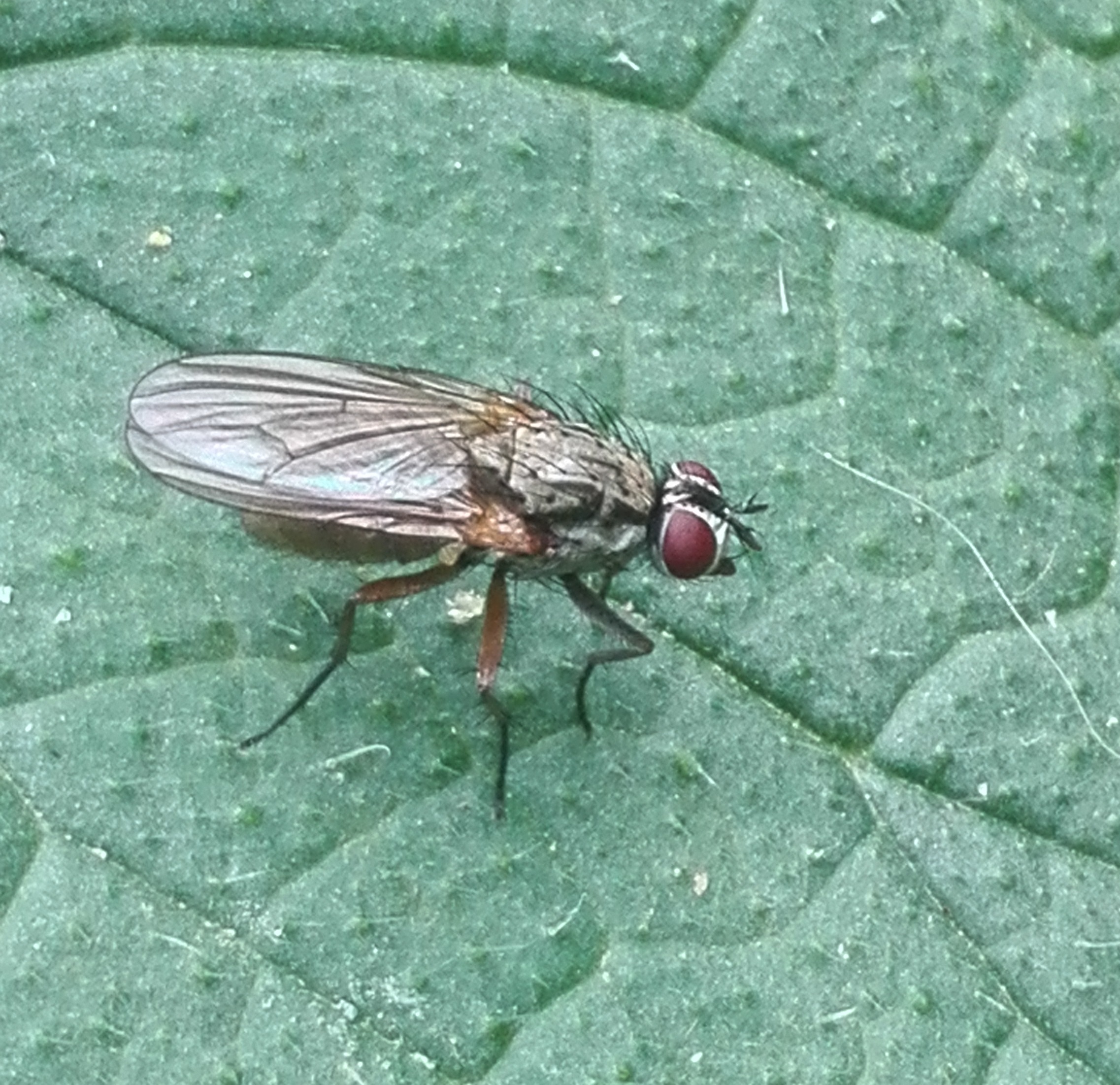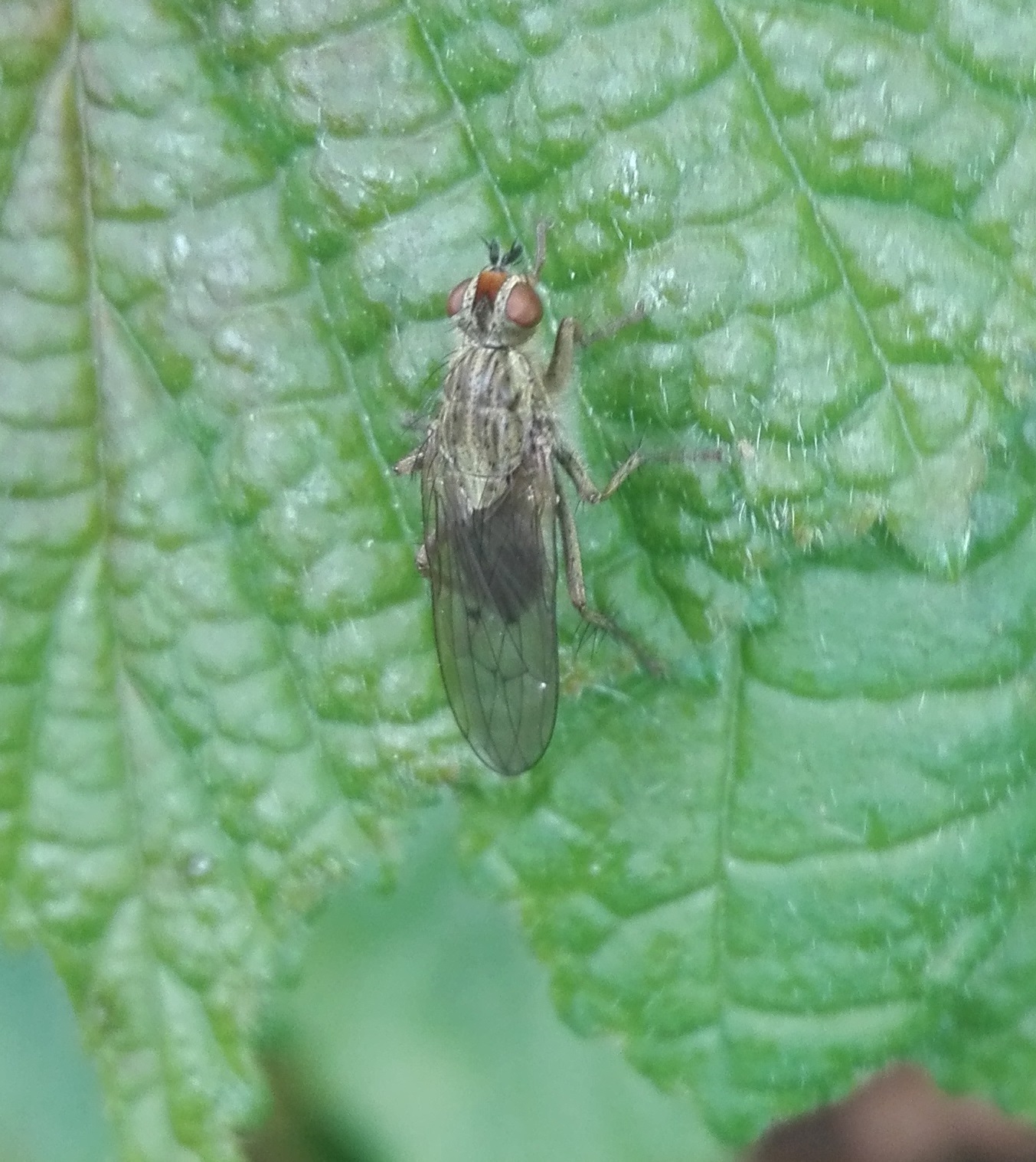Common Awl Robberfly (Neoitamus cyanurus, #520)
/Another interesting insect in the garden - my first robberfly - a Common Awl Robberfly (Neoitamus cyanurus). This one got itself trapped in the kitchen window, but usually these insectivores should be found outside hunting flies and larger insects which they grab in mid-air and then immobilise with a venom. Sometimes also known as assassin flies or stiletto flies, these flies are strong and can often take insects as large or larger than themselves.






